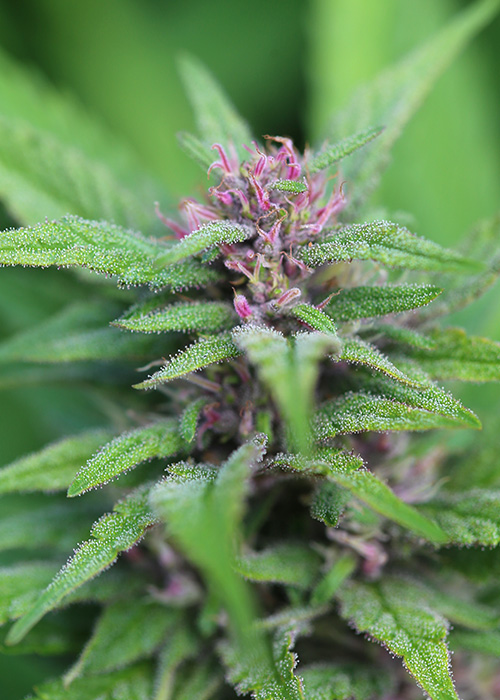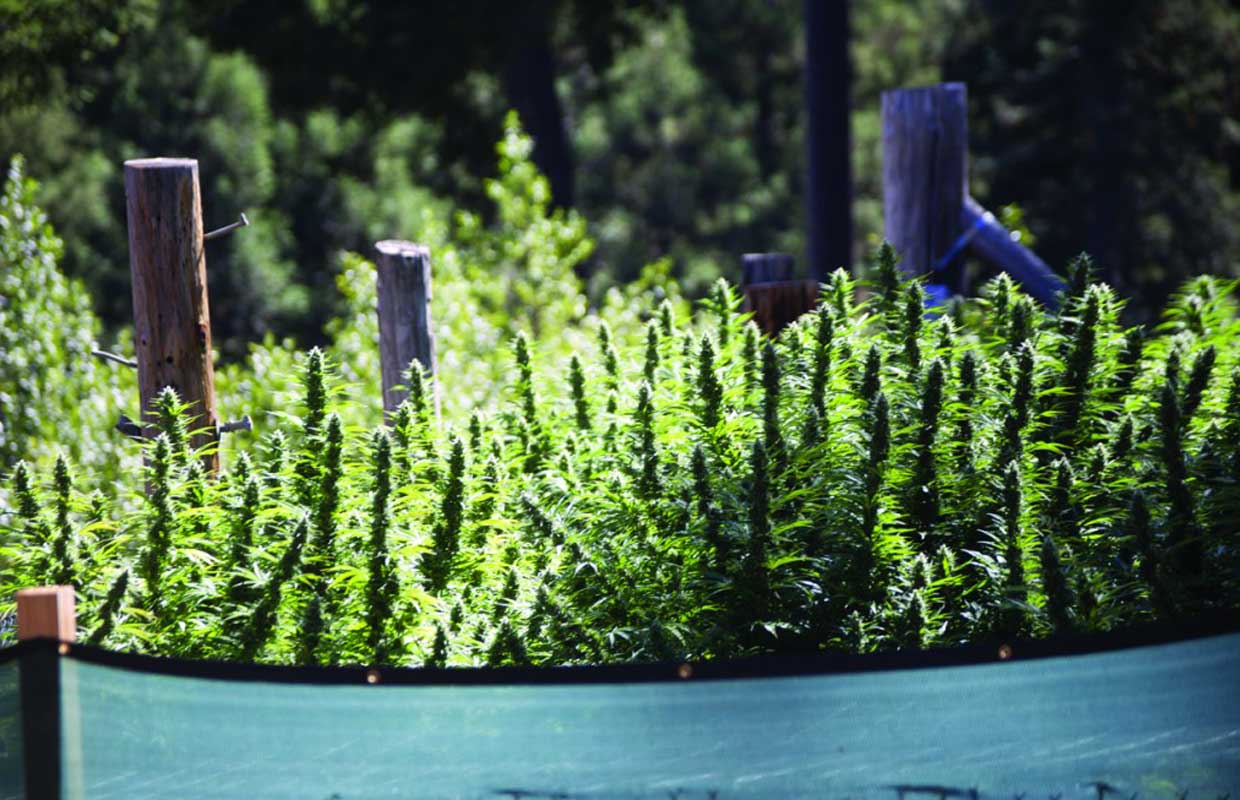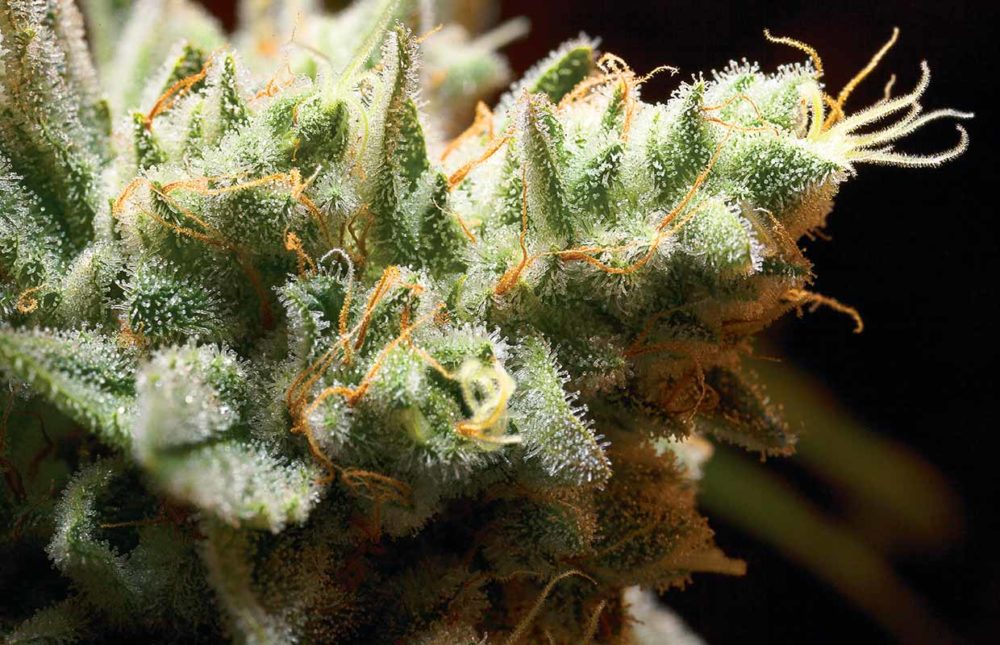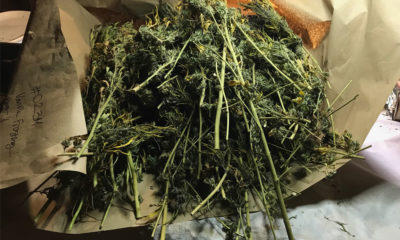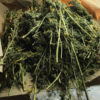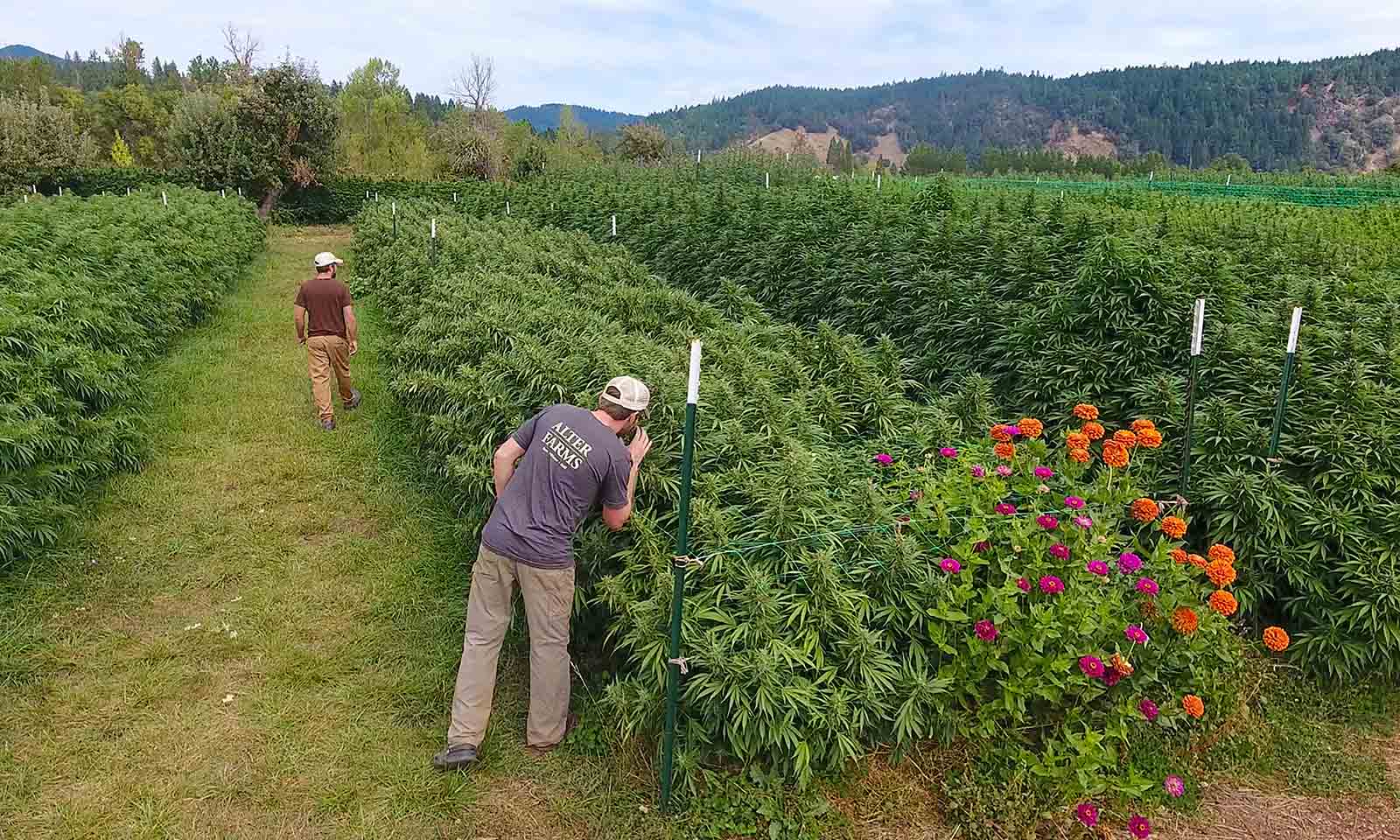
Cultivation
‘Dirt Is Inert, Soil Is Alive’
A low-input cannabis farm in Southern Oregon supports biodiversity.
It’s a dreary late-November day at Alter Farms and Cody Alter is ecstatic. No, not because of the 3,000 plus cannabis trees he and the crew were able to tackle before the rains came. Nor was it the fresh batch of seeds they collected from hand-pollinated varietals. For Alter, the excitement is in the soil.
“We planted our cover crop a little late but it sprouted and by spring these rows will be knee high in vegetation,” Alter says. “We are constantly growing something in our soil, the continuous growth maintains the microbial communities.”
I lean down and stick my hand into the soft earth, layered loosely with decomposing leaf matter and speckled with the tiny seedlings.
“This is some nice looking dirt,” I say.
From the look on Alter’s face, I can tell I’ve said something silly.
“Dirt is inert, soil is alive,” he responds with a grin.
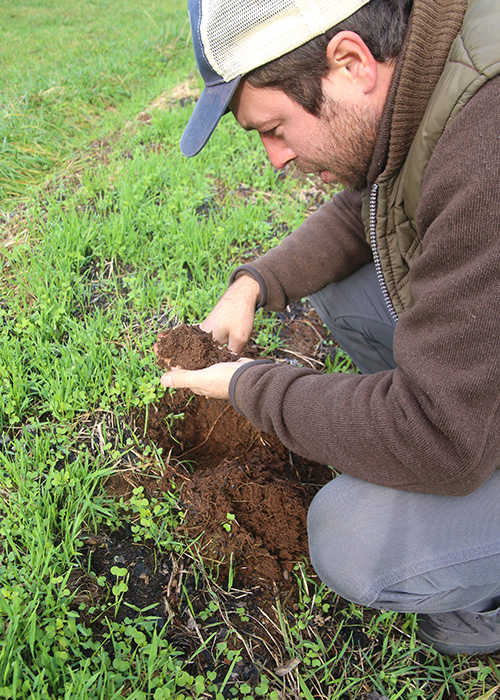
Cody Alter examines the soil. Alter Farms sends soil samples in for regular testing to ensure it contains the right mineral balance for optimal plant growth.
This is my second trip to the licensed recreational cannabis producer outside Grants Pass, Oregon. I had visited earlier in the fall with my wife, a mycologist, who was tasked to sample root tips on the farm for fungal diversity. During that visit, we were blown away by the size and consistency of their acre of canopy, packed with vibrant bushes of colorful colas and buzzing with biodiversity. I had to ask what they fed their plants.
Alter replied proudly with their farm’s motto: “sun, water and soil.”
In an industry fueled by bottled liquid nutrients and heavy chemical fertilizers, it is a rarity to see low-input organic cannabis farming, especially at scale.
A few months later, I returned to the farm to learn some tricks-of-the-trade from Alter and his co-founders, Jason Rambo and Jodi Haines. None of the three 30-somethings match my stereotypical expectations of an organic farmer and neither does their jargon.
Rambo and Haines say they bought the property about three years prior. The grounds are neatly kempt and sprouting garden beds dominate the main field, while two greenhouses, fruit trees and compost piles all claim smaller sections of real estate. A pasture dotted with sheep and goats occupy about a third of the land. The livestock are for meat and their waste is used for compost.
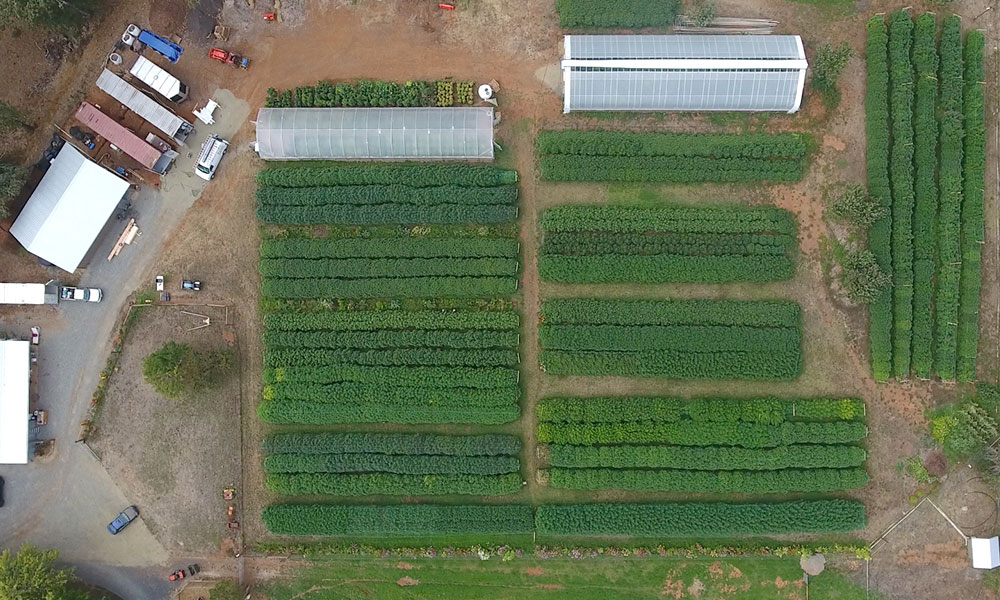
Alter Farms, as viewed from above. The outdoor farm uses cover crops and works to improve the clay soil layer that is common in their growing area by adding all-natural nutrients to the soil.
The trio attributes some of their success to the better part of a decade they’ve spent growing cannabis together. According to Alter, sustainable farming practices have always been a priority. As far as pulling off this season’s massive field of flower with minimal inputs, they say it’s not so simple.
“I’ve done side-by-side comparisons with plants grown in commercial soil mixes and fed bottled chemical nutrients to others grown in a local soil with only top dressing and water,” Alter says. “I noticed a huge difference in flavor and pest resistance and, even though we aren’t able to completely quantify it yet, a more nutritionally complete flower.”
The concept of a nutritionally complete cannabis flower is entirely new to me and takes a few minutes to sink in. We know through scientific research that plants need little more than NPK (nitrogen, phosphorus and potassium) to survive, but if a plant has the option of a complete diet of natural ingredients, won’t it thrive more? Akin to the difference between a greenhouse-grown tomato in a grocery store and a juicy mid-summer varietal grown at home, not all fruits are created equal. The color and shape may be the same, but I can’t shake the feeling one is better for the soul.
All of the founders agree the farm has taken plenty of labor and lots of love. For example, below their land is a common clay soil layer that growers in Southern Oregon refer to as the infamous “red clay death.” While many farmers would truck in hundreds of yards of pre-mixed peat moss, perlite and coco coir to cover the clay soil, Alter Farms took a different approach and worked to improve the clay soil itself.
“Everyone worries about heavy clay soils,” Alter says. “They are mineral rich, but the difficult part is making those minerals available. We send our samples off for soil nutrient analysis every season and add what we need to allow our plants to uptake what is here.”
It’s only been a few weeks since Alter Farms finished harvesting, and the rows have already been tilled, amended, broad forked, planted with a cover crop and layered with locally collected leaf material.
I ask how much topsoil, sand, pumice or perlite they brought in initially to mix with the clay, and again, I feel as if I’ve said something silly. Their list of soil additives is incredibly short. However, they do admit, almost with shame, that before their first season they had enough forest humus trucked in to cover their rows with about a half-inch of material. Over the last two seasons, they’ve started building their own.
“Our cover crop is a mix of vetch, peas, cereal grains, a couple different mustards and a type of rye that, when we till it in the spring, has a fumigant effect that drives away pathogenic fungi and root-feeding nematodes and symphylans,” Alter says.
He explains that without tilling, the perennial grasses would take over the farm’s garden beds. The cover crop keeps the weeds at bay, adds biomass and restores nitrogen to the soil. In the spring, they till again, add amendments, plant the cannabis and top-dress a few remaining nutrients. Once in the ground, the plants only drink water.
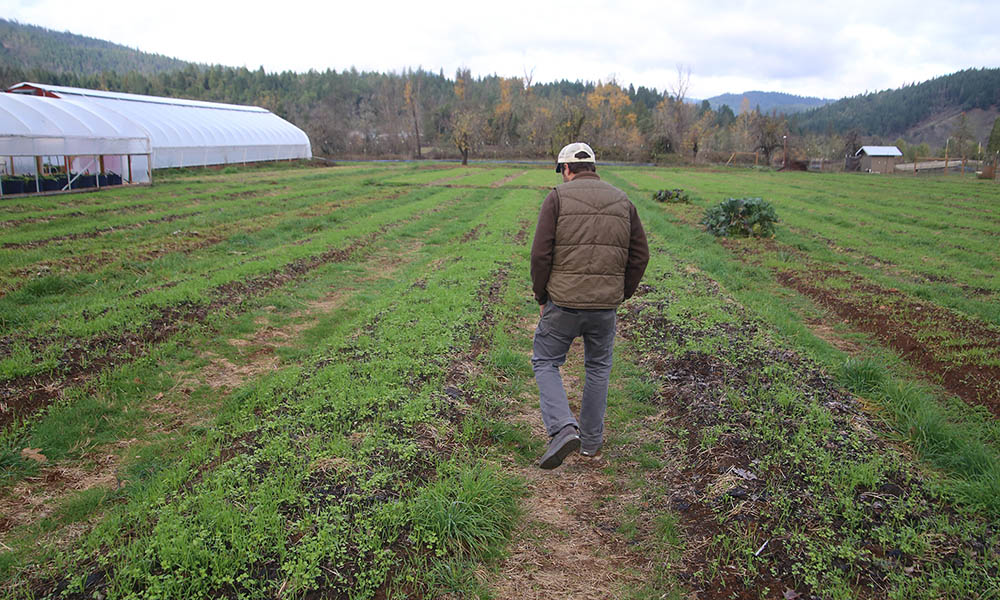
Cody Alter walks the sprouting field at Alter Farms in November. Continually growing something in the soil helps to restore nitrogen levels.
In the grey gloom of the late fall day, my mind travels back to my previous visit in the sunshine. At the ends of the beds and along fence lines, I saw brightly blooming zinnias, cosmos and sunflowers, with hummingbirds and butterflies sucking their nectar. One entire row was dedicated to herbs and brassicas and a corner of the property covered by a corn and cucurbit patch. The back of the field was dotted with fruit-bearing trees.
Alter Farms’ founders say their land provides enough to feed the crew and supply Haines’ local restaurant, Ma Mosa’s. Their theory is that the cannabis flowers bring beneficial bugs to the farm, and that having a healthy balance of many species will work to persuade any particular pest from taking over.
Even on my return trip to the farm, life is still abundant.
“Our goal is to leave the land healthier than when we arrived,” says Alter. “We are not fertilizer applicators, we are farmers, hands in our soil, and constantly working with and studying the effects of nature.”
I say my goodbyes after the tour. Back in my car, I head down the driveway and an advertisement pops on the radio for a local dispensary offering “Alter Farms Pineapple.” In a region that grows enough cannabis to feed the state and half the nation, I’m happy to hear their name stand out above the pack.
Originally published in the print edition of Cannabis Now.











